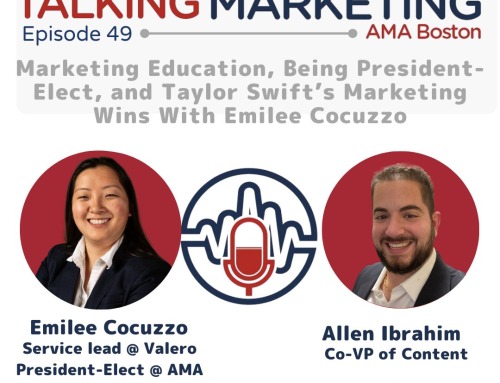During last week’s Digital Summit Boston, the biggest takeaway wasn’t about the latest martech or how to stop thumbs on social media. It wasn’t about using email better or keeping up on SEO.
In fact, the biggest takeaway was more analog than digital.
It was about storytelling.
It was about strategy.
The biggest, loudest lesson I heard over the two days was to start at the end and work back to the beginning.
Before you can put a winning strategy in place or tell a successful story, you have to know where you want to end up. You have to know where your customers want to end up.
Only then can you create a successful path from where your customers are to where you want them to be.
What Do Your Customers Need?
In her opening keynote, Ann Handley of MarketingProfs said that good storytelling is more about brains—creativity and strategy—than marketing dollars. But how do you do that?
- Tell a bigger story. It’s a noisy world out there; capture your customers’ attention by making their story your story. That story is about your customers’ goals and obstacles. Instead of stating “We need a piece of content for ___,” say “Our customer needs ___.”
- Create bolder marketing. Don’t blend in with everyone else. Take a risk. Change the narrative, and people will notice.
- Speak in a braver voice. Ditch the marketing-speak. Use language specific to your customers’ bigger story. Use that language consistently and everywhere: Your website. Video captions. Instagram. Email. Everywhere.
What Does Your Data Tell You?
Marc Engelsman of Digital Brand Expressions also encouraged attendees to start at an end point—with the data you already have.
During his session on predictive analytics, Engelsman explained that by analyzing data over time, you can map out where you want to go. Don’t rely on just one data point, however. “The trend is your friend,” he said.
Yet predictive analytics can be overwhelming and expensive. Engelsman shared a few tools to get you started:
- Google Keyword Planner provides directional guidance on keywords.
- Google Correlate finds correlations to keywords.
- Google Search Console checks your site-search data.
Remember, choose keywords based on your customers’ intents. As your customers move down the sales funnel from awareness to evaluation to action, your keywords should align with those intents.
Where Is the X on Your Customers’ Map?
Another end point where you can begin is where your customers end up, like the X on a treasure map.
In “User Experience Mapping Methods Compared: When to Use Which,” Sarah Gibbons of Nielsen Norman Group shared several maps with known end points:
- Empathy map: The customer journey map at one point in time. Use it to consolidate your research about a customer type and create a persona.
- Customer journey map: The map we’re all familiar with. Use it during the design process as a reference point. Let it be your single source of truth.
- Experience map: The customer journey map without your specific product or service and without a specified customer. Use it to track general human behavior and construct a baseline for something you’re creating.
- Service blueprint: The backstage view of the customer journey. Use it to design how you will fulfill that journey.
By mapping out different aspects of the customer journey, you’ll discover how your customers get to the end point, and where you and the rest of the company need to jump in to guide your customers there.
What Job Do Customers Want You to Do?
Maybe your chosen end point isn’t data. Maybe it isn’t an X on a map. Instead, that end point could be the job customers are hiring you to do, as Cliff Seal of Salesforce outlined during his presentation.
Ask yourself what job your company does for your customers. Hint: it’s hidden in the first thought your customer thinks that eventually leads to a sale.
You need to find out what that job is. The best way? Ask your customers. What was the first thought they had when they realized they needed a solution?
Talk to internal folks, too, advises Seal. What do sales and support hear? What do your analytics tell you?
You’ll discover a negative moment, a problem or obstacle that prevents customers from reaching their goal. That’s the moment to discuss. That’s the start of your customer’s story. And it goes like this: “When ____ [situation], I want to _____ [motivation] so I can ____ [expected outcomes].”
Remember, the I here is your customer. You’re solving their problem. You’re doing a job for them.
Once you know what job you do for your customer, you can work back to the problem that job solves.
It’s Still All About Our Customers
In order to tell bigger stories, create bolder marketing, speak in a braver voice, and be more successful marketers, you need to know our customers’ goals and the obstacles to those goals. You need to know how you remove those obstacles and fill a need.
Only by starting at the end will you know how to go forward.
For more tips from Marketing Summit Boston, check out my latest Wakelet stories, “Bigger, Bolder, Braver: Digital Summit Boston, Day 1“ and “What’s Your Story? Digital Summit Boston, Day 2.”






